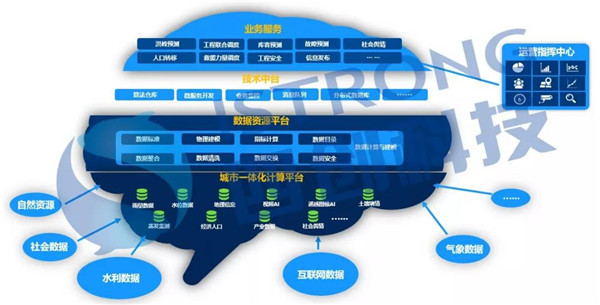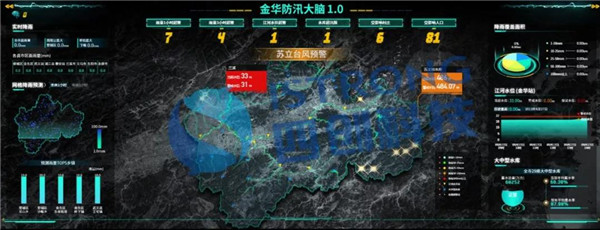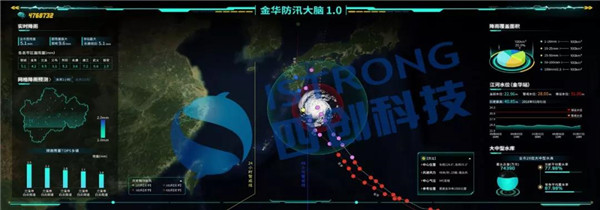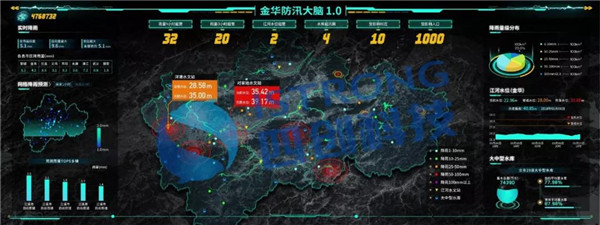
Flood Control Brain Solution
In recent years, water and drought natural disasters have occurred frequently, and the demand for sharing, mining, and analyzing hydrological, meteorological, and flood control data has become increasingly urgent. How to further improve the level of flood control command decision-making, and reduce the losses caused by flood and typhoon disasters, has become a new challenge that water conservancy workers urgently need to solve. The "Flood Control Brain" solution launched by Istrong deeply mines historical data on water, rain, and disaster situations. By deeply integrating disaster defense data resources from departments such as meteorology, hydrology, construction, land, civil affairs, transportation, etc., combined with flood situation monitoring, early warning, and command dispatch system, it analyzes and judges flood situation, hidden risk, predicts disaster development trend, scientifically formulates disaster response plans, thereby improving the efficiency of flood control command decision-making and reducing the losses caused by floods and typhoons.
The construction of the "Flood Control Brain" is divided into three stages, and it is divided into three steps, changing from intelligent to smart, realizing intelligent decision-making assistance of the "Flood Control Brain".
Build a flood control big data visualization platform to scientifically and intuitively reflect the associated information of the flood situation and its impact area on the command big screen, carry out targeted heavy rain grid precision forecast and population transfer heat map analysis and display, and make a flood situation research assessment.
Integrate the flood control data resources of relevant departments, through the deep application of big data and artificial intelligence, machine learning and other technologies, realize the "Flood Control Brain"'s autonomous learning, intelligent analysis, operation and scheme matching, and propose command scheduling and decision-making suggestions.
Through the optimization of the "Flood Control Brain", the transformation from event analysis to situation analysis is realized, and the transformation from intelligence to wisdom is realized. Combine multi-party information, carry out big data multi-dimensional deduction, according to the deduction results, issue early warnings for possible disasters in the future, and provide command scheduling solutions.

Construction Highlights
1.Comprehensive Perception: Establish a two-level perception system combining "surface-point".
2.Data Collection: Fully integrate data inside and outside the water conservancy industry, especially data from social, economic, population, and Internet aspects, to expand the application boundary of water conservancy.
3.Smart Tags: Through machine tagging, comprehensively and promptly increase the breadth of tags for water conservancy data.
4.Intelligent Decision-making: Based on the collection of all data, establish the connection between data and business according to AI algorithms and technical mid-stage.
5.Joint Scheduling: Combining water conservancy with artificial intelligence, form a predictive early warning, situational awareness, and joint scheduling capabilities.
6.Broad Service: Provide a broad service to all levels of institutions in the water conservancy industry and society.
Benchmark Case
The "Flood Control Brain" in Jinhua City, Zhejiang Province uses big data mining and analysis technology, combines daily flood control business and events, constructs flood control and disaster reduction event scene services, integrates various special applications, deeply digs into applications, realizes the integration of flood control and disaster reduction dispatching decisions, and achieves the goal of real-time forecasting and early warning, intelligent analysis and diagnosis, and auxiliary command and dispatch.
❖ Application Scenarios

▲ Typhoon Scenario

▲ Rainstorm Scenario
Feature Highlights
1.Visualization definition based on events and scenario themes
2.The application of big data technology to achieve data association analysis and mining analysis
3.The use of visualization technology to build a data big screen overview of water and drought disasters in the whole city, providing analysis of overview element situation
4.Establish a data split screen based on events, achieve event data association analysis
